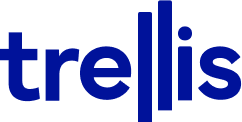Part 1: PMMs set up your AI foundation
Welcome to the first part in our four part series - A PMM’s First 30 Days Integrating AI - presented by Trellis Marketing, a product marketing consultancy helping product marketers succeed. Ambitious product marketing managers are eager to embrace and experiment with AI but it can be difficult to know where to start. This series is designed to help product marketing managers move beyond the basics and taking a strategic approach to building their AI for product marketing knowledge and usage.
Before you can leverage AI marketing tools to supercharge your research, messaging, and go-to-market strategies, you need to configure your tools for secure, effective use. This post will guide you through the essential setup for your Large Language Models (LLMs) and introduce the core concepts every AI-savvy product marketer needs to know.
Configure Your LLM for Smart, Secure Use
Think of your LLM—like ChatGPT, Claude, or other AI productivity tools—as a new junior product marketing manager. To get the best work out of them, you need to provide clear direction, guide with proper boundaries, and lead by example. Show them how you want them to operate and the results you’re looking for.
1. Prioritize Privacy with Data Controls
This is the most critical step for AI-driven marketing teams. By default, some LLMs use your conversations to train their models. For a PMM, this could mean exposing confidential product roadmaps, customer data, or launch strategies.
Action: Go to your LLM’s settings and turn OFF any option that involves data sharing or using your conversations for model improvement. In ChatGPT, you can find this under “Data Controls.” This helps ensure your proprietary information remains private.
Best Practice: Always align with your organization’s IT and security policies regarding AI tool usage. Understand what can and cannot be shared to maintain compliance with your company’s marketing technology stack and data protection practices.
2. Master “Temperature” for the Right Output
Temperature controls the randomness of an AI’s response. A small adjustment can dramatically change the output, so it’s important to know when to turn the heat up or down. Experiment with different temperature settings in different tools to understand what works best for each ask.
Low Temperature (0.1–0.3): Produces focused, predictable responses. Ideal for tasks like summarizing market research, analyzing competitors, or reformatting messaging frameworks.
High Temperature (0.7–1.0): Encourages more creative, diverse, and unexpected outputs. Perfect for creative campaign ideation, AI copywriting, or brainstorming go-to-market strategies.
At Trellis Marketing, we recommend creating internal “AI playbooks” to standardize these best practices across your marketing team. This helps to drive similar results across teams.
3. Personalize with Custom Instructions
One of the biggest complaints from users of LLM is the lack of consistency in the output and being tired of re-explaining your role, company, or target audience in every prompt. You can use the “Custom Instructions” feature to give your LLM permanent context. This saves you time and delivers more relevant results for marketing teams using the AI tools.
Remember to define key information about your work, and ensure that everyone is using the same definitions (where relevant):
Your Role: “I am a product marketing manager for a B2B SaaS company.”
Your Goals: “My primary goal is to create clear, compelling messaging that resonates with enterprise IT leaders.”
Brand Voice: “Our brand voice is expert, helpful, and professional. Avoid overly casual language or clichés.”
You can also create a custom GPT and upload background documents to inform its thinking and output — a useful step for marketers who want consistent brand-aligned AI content generation.
Prompting 101: The Art of the Ask
Effective prompting is the difference between a generic, unhelpful response and a game-changing marketing insight.
Editing vs. Branching: When you want to refine an AI’s answer, don’t start a new chat. Instead, edit your original prompt. This helps the AI better understand your brand tone and communication patterns.
Use Prompt Helpers: Tools like Prompt Genie or Trellis Marketing’s recommended AI prompt frameworks can help you structure effective requests that lead to stronger campaign insights.
Learn the Language of Modern AI
As you advance, you’ll encounter terms that describe more sophisticated AI marketing workflows. Here are three to know:
AI Agents: Autonomous systems that can perform specific marketing tasks, such as competitor research or lead analysis.
Agentic Workflows: Connecting multiple AI agents for end-to-end tasks—like research, summarization, and reporting—can transform how your product marketing team operates.
Vibe Coding: The newest evolution of no-code AI development, enabling marketers to turn ideas into prototypes or campaign tools with natural language inputs.
Challenge: Prototype a tool for your personal use on a no-code platform (lovable.dev, bolt. replit). Leverage an LLM to create a prototype prompt for the platform.
Your Week 1 Product Marketing – AI Quick-Win Checklist
✅ Adjust Privacy Settings: Turn off model training/data sharing in your primary LLM.
✅ Confirm Company Policy: Check your organization’s guidelines on AI marketing tool usage.
✅ Experiment with Temperature: Compare outputs at low (0.2) and high (0.8) settings to optimize AI creativity.
✅ Set Up Custom Instructions: Add your role, goals, and brand voice.
✅ Practice Prompt Editing: Refine existing AI prompts to improve clarity and tone.
With your foundation set, you’re ready to identify exactly where AI in product marketing can make the biggest impact on your day-to-day work.
Next up in part 2: Audit Your PMM Workflow for AI Wins
In our next post, Trellis Marketing will guide you through a systematic audit to uncover the best opportunities to start your AI pilot from straight AI automation to marketing co-piloting.
